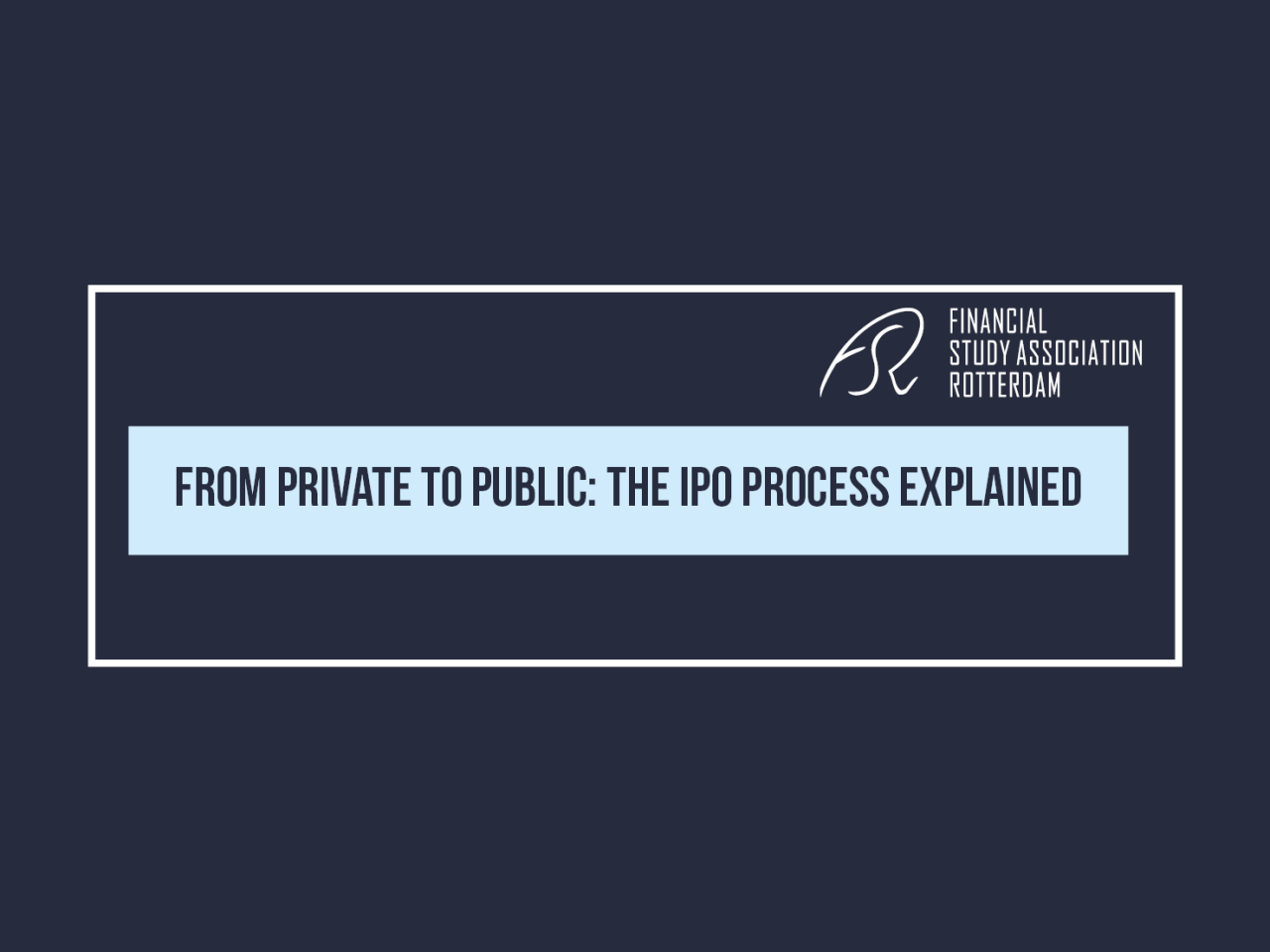From private to public: the IPO process explained

From private to public: the IPO process explained
What do Reddit, Douglas and Birkenstock have in common? All of these companies had their IPO last year, with varying results. A windfall for some, but a disappointment for others, in this article we delve into the IPO process and will highlight the main stages of an IPO. These stages can be divided into the preparation stage where one or multiple investment banks are selected, the marketing stage, the pricing stage and the execution and post-IPO phase. Moreover, we explain the different types of IPOs and illustrate the different parties involved in the process
Preperation stage
An Initial Public Offering (IPO) is a milestone in the lifetime of any business. With this offering, a privately owned company lists its shares on the stock exchange market, transforming them into publicly tradeable shares for investors. The event of listing shares on a stock exchange can be a profitable opportunity for a company, as is often shown in the media. However, an IPO still is a very risky investment with the possibility of inconsistent returns over time and great expenses for both completing the process and complying with rules that are continuously applicable to listed companies.
The starting point of this stage is a restructuring, in which requirements are met for legal and tax structures for a public listed company. Examples of restructurings are the minimisation of the effective tax rate of a company, optimization of corporate structure, but also where the location of the headquarters will be. In addition, a critical eye should be cast over the governance issues. The management compensation structure, guidelines for board meetings and guidelines for internal controls are subject to a possible revision. All the corporate structures and guidelines are included in a Registration Statement that will be reviewed by a national commission, such as the SEC in the USA.1
Marketing stage
A company that aims to launch an IPO will contact investment banks, also referred to as “underwriters”, to support and facilitate them in the process. One of the banks is appointed as book runner to lead and coordinate the process as primary underwriter. Other members of the IPO team are auditors, lawyers, investor relations and advisors. An investment banker will perform the valuation of a company, by analyzing their financials, market trends and the industry growth. Additionally, an investment banker will draft a prospectus, which is a legal document that includes relevant information for potential investors. Following this step, the bank will organize so-called roadshows: presentations in which the IPO-proposal is pitched to prospective investors. To prove the trust of the investment bank in the company’s IPO and mitigate risk for the company, the bank will often have skin in the game by making an ‘underwriting commitment’, making a commitment to purchase a specified number of shares at the offering price.2 Effectively, a company’s equity story to tell investors is important.
Pricing stage
To determine the issuing price of the IPO, the underwriter generates and records investor demand for the shares. This process is called book building.3
Before the roadshow, a preliminary prospectus is prepared. Based on this, interested investors can submit “Indications of Interest”, which means that they will share the intended number of shares that they want to buy and for what price. The final offering price of the IPO is highly dependent on the interest level of investors. With the information from the book building, the investment bank will set their IPO price and create an IPO allocation, including how many shares will be sold to every investor. Ideally, this price is close to the fair value estimate. However, external factors tend to have an influence.4
Execution and post-IPO
After completing the processes described above and obtaining approval of the local regulator, the first day of publicly trading the shares, the so-called Initial Offering Date, dawns.5 From this moment onwards, the company tries to meet the expectations of investors, which is seen as one of the biggest challenges for a company.6 Moreover, a listed company has to adhere to a wide range of regulations that do not apply to private companies, for example with regards to transparency.7 On the other hand, listed companies have access to a larger pool of capital.
Determinants of a successful IPO
IPO proceeds can vary largely amongst different IPOs. For example, the recent Douglas IPO in Frankfurt showed disappointing results, while the Reddit share price increased 60 percent shortly after its IPO in New York.8 Naturally, all companies that execute an IPO want a successful result, enabling the company to realize long-term growth. But what makes a successful IPO and how can this be measured?
There are several ways of measuring IPO success. Some measurements are: whether the final price range is within the preliminary prospectus price range, the valuation of the company at IPO, the share price appreciation from the offering date onwards and the ability to attract talent.9 The leading sectors for IPOs are the technology sector and the pharma life sciences sector. Some characteristics of companies executing successful IPOs are a growing total addressable market, a differentiated business model, a strong, sustainable, visible revenue growth, an experienced management team, and strong margins.10
Conclusion
In conclusion, an IPO is a significant milestone for any company, marking its transition from private to publicly traded status. While the IPO process offers opportunities for growth and access to capital, it also comes with risks and regulatory responsibilities. Success in an IPO can be measured through various factors such as pricing accuracy, market valuation, post-offering share performance, and talent attraction. Companies with strong fundamentals, innovative business models, and experienced leadership tend to fare better in the IPO market. Ultimately, navigating the IPO journey requires careful planning, diligent execution, and ongoing commitment to meeting investor expectations and regulatory standards.
Bibliography
- PWC. https://www.pwc.com/us/en/services/consulting/deals/library/roadmap-for-an-ipo-a-guide-to-going-public.html.
- EY. https://assets.ey.com/content/dam/ey-sites/ey-com/en_gl/topics/growth/ey-guide-to-going-public-strategic-considerations-before-during-and-post-ipo-v2.pdf.
- EY. https://assets.ey.com/content/dam/ey-sites/ey-com/en_gl/topics/growth/ey-guide-to-going-public-strategic-considerations-before-during-and-post-ipo-v2.pdf.
- EY https://assets.ey.com/content/dam/ey-sites/ey-com/en_gl/topics/growth/ey-guide-to-going-public-strategic-considerations-before-during-and-post-ipo-v2.pdf.
- Initial Offering Date: What It Is, How It Works. https://www.investopedia.com/terms/i/initial-offering-date.asp.
- Post-IPO Life: Tips For Navigating The Public Markets Successfully. https://www.forbes.com/sites/forbesbusinesscouncil/2024/01/16/post-ipo-life-tips-for-navigating-the-public-markets-successfully/?sh=74c425c69d81.
- Listing Requirements: Definition and Criteria for Stock Exchanges. https://www.investopedia.com/terms/l/listingrequirements.asp.
- Beursgang Douglas valt tegen, Reddit knalt omhoog. https://fd.nl/financiele-markten/1511610/beursgang-douglas-valt-tegen-reddit-opent-hoger.
- What makes a successful IPO: PwC https://www.pwc.com/us/en/services/consulting/deals/library/successful-ipo.html.
- What makes a successful IPO: PwC https://www.pwc.com/us/en/services/consulting/deals/library/successful-ipo.html.











